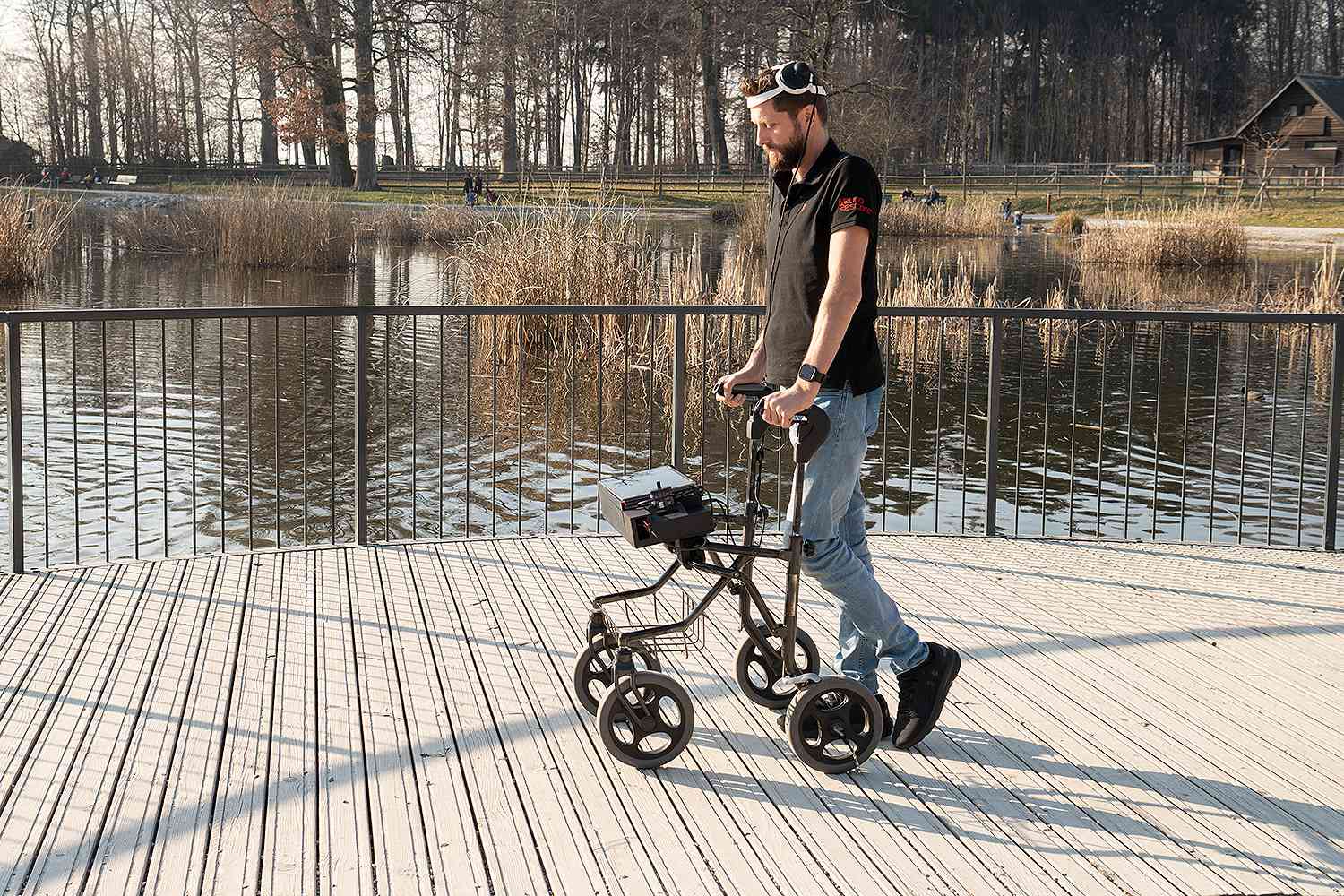

Gert-Jan Oskam, 40, is walking again after being paralyzed in a bicycle accident 12 years ago using electronic brain implants that allow him to control his legs and feet with his thoughts. The implants send signals to another implant on his spine, which then maneuvers his limbs. Oskam, originally from the Netherlands, says the revolutionary procedure changed his life.
“I feel like a toddler, learning to walk again,” he told the BBC. “It has been a long journey, but now I can stand up and have a beer with my friend. It’s a pleasure that many people don’t realize.”
The technique was engineered by neurosurgeon Jocelyne Bloch, of Lausanne University, and a team of Swiss researchers who used minimally invasive surgery to insert the implants into Oskam’s brain and spinal cord. She said the program is still in the trial stage, but she hopes to get it out to the public as soon as possible.
“The important thing for us is not just to have a scientific trial, but eventually to give more access to more people with spinal cord injuries who are used to hearing from doctors that they have to get used to the fact that they will never move again,” Bloch explained.
Harvey Sihota, chief executive of the U.K. charity Spinal Research, which was not involved in the research, said Oskam’s progress is “very encouraging” but the technology still has a long way to go before it can be used on paralyzed individuals.
“While there is still much to improve with these technologies, this is another exciting step on the roadmap for neurotechnology and its role in restoring function and independence to our spinal cord injury community,” Sihota commented.
The procedure was performed in July 2021 and the results were recently published in the journal Nature. According to the report, Bloch cut two 5 cm holes on each side of Oskam’s skull above the regions of the brain involved in controlling movement. She then inserted two disc-shaped implants into his skull that wirelessly send signals to two sensors attached to a helmet on his head. The researchers created an algorithm that translates these signals into muscular movements that are then deciphered by another implant on Oskam’s spinal cord.
Within a few weeks, he was able to stand and walk without the use of his walker. “Seeing him walk so naturally is so moving,” said Grégoire Courtine of the École Polytechnique Fédérale in Lausanne (EPFL), who led the project. “It is a paradigm shift in what was available before.”
Oskam said having the implants communicate with one another gives him greater control over his movement. He started out with an implant on his spinal cord, which is designed to interpret weak signals from his brain, but the added brain sensors give these signals more range and accuracy.
“I felt before that the system was controlling me, but now I am controlling it,” Oskam said. But this technology is still too cumbersome and expensive for constant use. Patients like Oskam can only use it for a few hours at a time as part of their physical therapy. However, they are showing improvement even when the system isn’t in use, which suggests the nerve endings are being restored.
The makers are hoping to make it more accessible for patients in the coming years so it can be incorporated into their everyday lives. “It’s coming,” Courtine added. “Gert-Jan received the implant 10 years after his accident. Imagine when we apply our brain-spine interface a few weeks after the injury. The potential for recovery is tremendous.”
When we discuss students, we always mention their qualities. Those qualities show what they are…
If you or someone you know is juggling mental health issues alongside substance abuse, understanding…
For the last couple of weeks, the Israel-Hamas conflict has taken over the news cycle.…
Our eyes are invaluable, serving as our windows to the world. The ability to see…
Undoubtedly, one of the most demanding and challenging professions is nursing. Nurses work long hours in…
Echocardiography, or echo for short, is a key diagnostic test used by cardiologists to assess…